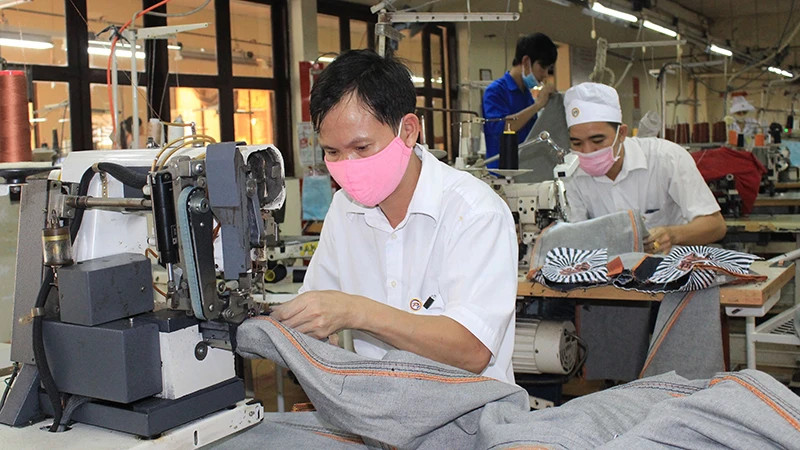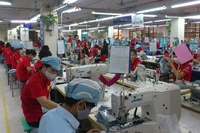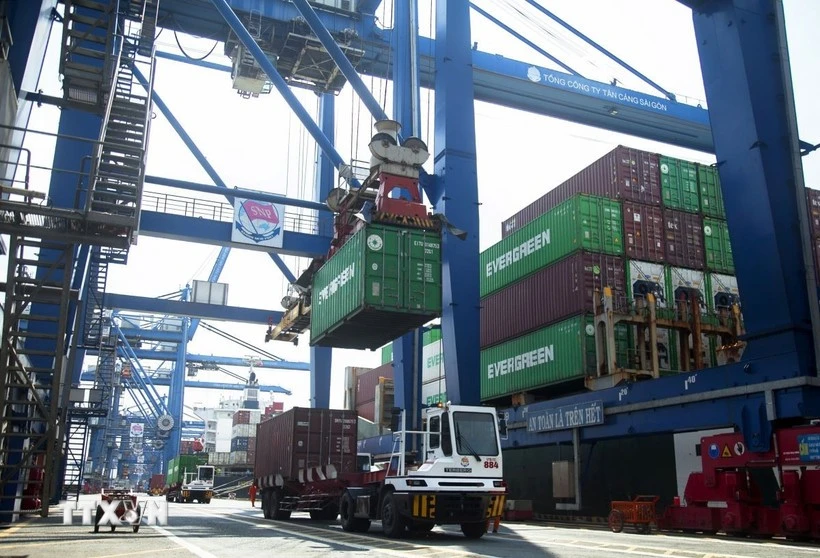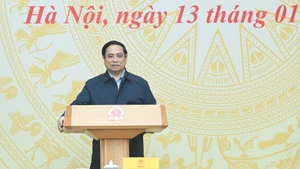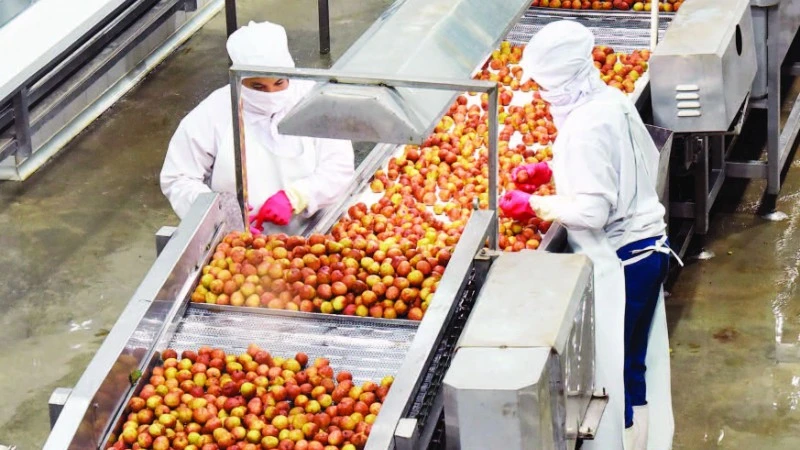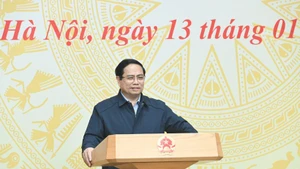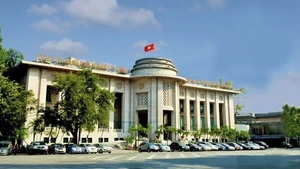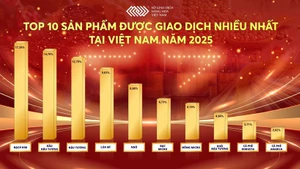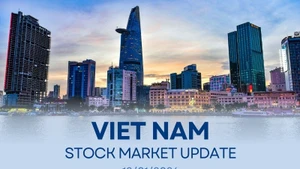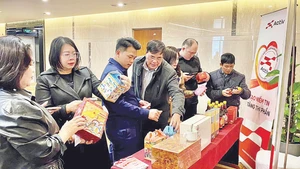Over the past ten years, Vietnam's textile and garment industry has witnessed the strong development of reputable brands along with a series of new product lines and brands, including many built with a methodical strategy and direction.
Creating a pedestal
Garment 10 Joint Stock Company (Garco 10) has recently launched two product lines under the brands of Generos and DeTheia to meet the increasing needs of customers. The Generos brand, which targets the young customer segment, is expected to bring a breath of fresh air with its youthful and dynamic style; meanwhile, DeTheia is a high-end product line for women.
Besides the above two product lines, for many years, Garco 10 has been continuously investing, designing, and releasing many multi-style fashion products in rich forms and diverse materials and designs in line with fashion trends of Vietnam and the world, such as the Eternity GrusZ, Garment 10 M series, or ECO — which is one of the new product lines with unique and environmentally friendly characteristics. These products were made of diverse materials including silk, linen, natural fibre fabrics, etc., which are not harmful to the environment or users.
Sharing about the process of brand development, General Director of Garco 10 Than Duc Viet affirmed that the company has its own collections to meet all customer needs. With a scale of 12,000 workers, including more than 300 designers and employees of the sample and market development departments, etc., Garco 10 will soon achieve its goal of increasing the proportion of ODM (Original Design Manufacturer) in addition to increasing the current proportion of FOB (manufacturing orders in the form of purchasing raw materials - semi-finished products). Besides exports, since 1992, the company has been developing the Garment 10 brand to sell in the domestic market. With this brand, Garco 10 has followed the OBM method (designing, producing, and selling products under its own brand name), which is not different from global fashion brands. Thereby, the company has been gradually approaching the world market, with the exports of Garco 10's own brand, instead of making FOB or ODM models for foreign brands. “Garco 10 has seen the value chain and analysed this direction very clearly in its strategy over the past 77 years of establishment and development, while focusing on enhancing value in the chain instead of simply machining,” said Viet.
With more than 1,300 stores introducing and selling products nationwide, Viettien General Garment Joint Stock Company has been gradually affirming its name and position in the market with famous brands such as Viettien, Viettien Smartcasual San Sciaro, Manhattan, T-up, Vietlong, and Camellia.
Bui Van Tien, General Director of Viettien General Garment Joint Stock Company, said the company has set the target of promoting the development of the domestic market by 2030, aiming to reach the proportion of Viet Tien branded exports from 10% to 15% of the total export value of Vietnam's textile and garment industry, with a turnover of 1.2 to 1.4 billion USD throughout the system.
In addition to Garco 10, Viettien currently has many other businesses that are focusing on promoting brand development, such as Duc Giang and Nha Be. Among them, many businesses have developed strategies to bring their products to the world market. However, because Vietnam does not have a strong fashion industry, human resources for the industry are both weak and lacking. Starting with no experience and no existing supporting industries and distribution system, the businesses self-advocate by studying and working at the same time.
This has slowed down the development process of the businesses. On the other hand, the fashion industry requires regular and continuous creativity, so businesses must heavily invest in the research and development of diverse products to serve the increasing demands of consumers in the market. It is especially necessary to build a large international brand as well as a distribution system to promote product consumption in the world market.
Vice Chairman cum General Secretary of the Vietnam Textile and Apparel Association (Vitas) Truong Van Cam said that not only the technology, weaving and dyeing, but the design phase is also very weak. Many brands are famous in the domestic market but cannot be exported globally, so the added value is not high.
Proactively sourcing raw materials
Currently, Vietnam’s garment and textile industry is at a low level in the global garment and textile chain. If the country can proactively source raw materials and promote the design phase, the value of its garment and textile products will definitely improve. If the distribution phase can also be enhanced, the added value will also be higher.
Besides financial difficulties and inadequacies of policies and mechanisms, there are also other obstacles, such as a lack of qualified human resources for production. There are many factories with huge investments that fail to work out due to shortages of high-quality human resources.
Dr. Hoang Xuan Hiep, Principal of Hanoi Industrial Textile Garment University, said that design plays a crucial role in fashion development, which is why schools train Bachelor of Fashion Design, equipped with the newest and most advanced equipment for teaching. We can mention virtual 3D software, able to integrate material selection, basic product design, fashion collections, and organise virtual fashion shows for customers. Customers can see and approve samples, as well as make requests for adjustments, colour and material changes, right on the virtual model.
In addition, the university also includes in the fashion design training programme all new world trends, such as green fashion and recycled fashion, to train high-quality human resources who can apply the achievements of the 4.0 industrial revolution in design and production.
To participate more deeply in the global supply chain, businesses promote investment in modern equipment and machinery to improve productivity, quality, and competitiveness in the market. Besides, they must convert to Original Design Manufacturer (ODM) and Original Brand Manufacturer (OBM) production methods to increase value in the production chain.
According to the Chairman of the Board of Directors of Vietnam Textile and Garment Group (Vinatex) Le Tien Truong, the characteristic of the garment and textile industry is supply according to chain. Designers who own fashion brands often choose the entire supply chain from raw material production, textile product manufacturing, and transportation to distribution. To implement a successful supply chain, Vietnam needs to prioritise developing supporting industries, specifically the production of textile and garment raw materials.
Garment and textile are industries with large export turnover in Vietnam, but up to 60-70% of raw materials must be imported, including fabric, leather, high-quality sewing thread, buttons, metal zippers, and others. Textile and garment export revenue has reached 40.3 billion USD, but Vietnam has to spend more than 23.2 billion USD to import raw materials for production, making the value earned by the industry very small compared to the huge export turnover achieved annually.
Therefore, there is no other way but to promote the development of supporting industries for the garment and textile industry. It is necessary to establish industrial clusters to focus on producing raw materials and solving the wastewater treatment problem from the dyeing phase. In addition, businesses investing in raw material production should be given preferential policies in terms of land tax, VAT, income tax, and others.
On the other hand, businesses must proactively invest in modern equipment to increase productivity and convert production methods from tailoring to FOB, ODM, and OBM methods to increase product value and quality. They should continue the trend of green production, energy saving, use of renewable energy, and environmental protection to create competitiveness for Vietnamese textile and garment products.
